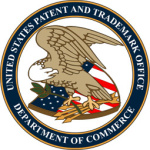- Branche: Legal services
- Number of terms: 3815
- Number of blossaries: 0
- Company Profile:
a clear depiction of the mark an applicant seeks to register. Every application must include a representation of the mark. The USPTO uses representations of marks to file marks in the USPTO search records and to print marks in the Official Gazette (eOG:T) and on registration certificates.
For TEAS applications, if the mark is in standard character form, a separate page depicting the mark is not required. If the mark is special form, (i.e., includes a design or stylized lettering), the applicant must attach a digitized image of the mark in .jpg format to the electronic submission.
Industry:Legal services
a formal request for the USPTO to return an abandoned application to active status. These petitions are handled by the Office of the Commissioner for Trademarks, and must be received in the USPTO within two (2) months from the issue date of the notice of abandonment. The standard used for deciding a petition to revive is unintentional delay, that is, whether the applicant’s delay in responding to an Office action or Notice of Allowance was unintentional.
Industry:Legal services
a letter from a trademark examining attorney setting forth the legal status of a trademark application. There are several types of Office actions: examiner’s amendments, priority actions, non-final Office actions, final Office actions, and suspension inquiry letters.
Industry:Legal services
a letter in which an examining attorney sets forth specific requirements that the applicant must meet before an application can be approved for publication. An examining attorney will issue a priority action after consulting with an applicant or the applicant’s attorney. Unlike an examiner’s amendment, the priority action does not confirm resolution of the issues; instead, it explains the requirements still outstanding.
The applicant must respond to a priority action within 6 months from the date the priority action is mailed. If the applicant fails to do so, the application will be abandoned. Please note that examining attorneys have no discretion to extend the time for filing a response to an Office action.
The benefit of a priority action is that, if the applicant responds within 2 months, the application will be given priority in processing the response.
Industry:Legal services
a list of all patents, publications, U.S. applications, or other information submitted for consideration by the Office in a non-provisional patent application filed under 35 U.S.C. § 111(a) to comply with applicant's duty to submit to the Office information which is material to patentability of the invention claimed in the non-provisional application.
Industry:Legal services
a proceeding before the Trademark Trial and Appeal Board in which the plaintiff seeks to prevent the issuance of a registration of a mark. An opposition is similar to a proceeding in a federal court, but is held before the Trademark Trial and Appeal Board, a USPTO administrative tribunal.
Any person who believes that he or she will be damaged by the registration of a mark may file an opposition, but the opposition may only be filed in response to the publication of the mark in the Official Gazette.
Industry:Legal services
a product’s design, product packaging, color, or other distinguishing nonfunctional element of appearance
Industry:Legal services
A property right granted by the Government of the United States of America to an inventor “to exclude others from making, using, offering for sale, or selling the invention throughout the United States or importing the invention into the United States” for a limited time in exchange for public disclosure of the invention when the patent is granted.
Industry:Legal services
If the request for ex parte reexamination is filed by a third party and not the patent owner, the third party may not participate in the ex parte proceedings beyond the filing of a reply to the patent owner's statement under 37 CFR § 1.530, if the patent owner files a statement. No other reply or submission by a third party will be considered in ex parte reexamination.
Industry:Legal services
In applications under §§1 and 44 of the Trademark Act, the applicant may claim more than one basis, and may add or substitute a basis after filing the application. The “current filing basis” means the basis, as amended (changed after the initial or original filing). If the basis has not been amended, the current filing basis is the same as the original filing basis.
Industry:Legal services
